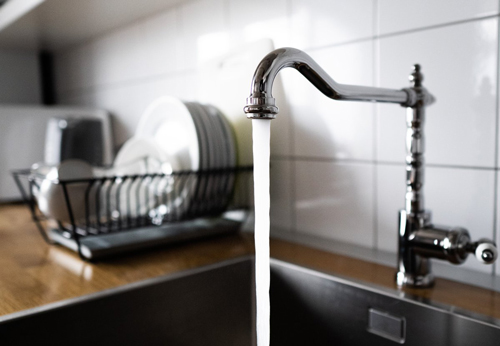If you are one of the millions of households that relies on private well water for your household water supply, there’s a good chance that your water contains a certain amount of tannins. Low levels of tannins are not necessarily harmful, but they can make your water look unappealing, have a poor odor, have a bitter taste or even make it hard to use. It’s important to understand what tannins are and how you can remove tannins from your water.
What are Tannins?
Tannins are a type of organic material that occurs due to plant matter and vegetation that are decaying in the environment. Tannins are present all around us in things like dirt, leaves and tree bark. Tannins are generally brownish yellow, which is why if you have tannins in your water in high levels, you might notice discoloration in the glass when you drink it or even have stains on your laundry. Tannins are often found in coastal locations, marshy areas and places in low elevation. This is part of why they are so commonly found in private wells.
Why Are Tannins Undesirable?
It’s important to know that there are not researched effects of drinking tannins in your water, so you are not in serious danger like you are from some other contaminants. However, there are still many reasons why you might want to remove tannins from your water. Water that looks dirty is off-putting, especially because it can lead to staining on white dishes, white clothing and even clothing that is not white. Tannins can also lead to a bitter taste in your water or a strange smell that is undesirable. In short, you will want to remove tannins from your water because of the practical side-effects and not necessarily for health.
Are There Tannins in Your Drinking Water?
The best way to determine the amount of tannins present in your drinking water is through testing. We offer tests that can give you a precise look at what is your water, including tannins and other contaminants, and you can also start the testing process at home yourself. Fill a glass with water from your tap and let it sit overnight. If you see that your water is visibly discolored or there is sediment at the bottom, it’s a good sign that your water has tannins. Now, if your water contains tannins, there is also a high chance that it has other issues including high levels of minerals that lead to hardness and sulfates. We can perform a water test and give you a precise look at what is or isn’t inside.
What Should You Do to Remove Tannins from Your Water?
- One of the best ways to get rid of tannins is using ion exchange technology, like what is used in reverse osmosis systems. Ion exchange also softens your water, and it can be used to remove challenging contaminants like elevated levels of minerals and tannins. During this process, your whole-house system will filter the water and remove undesirable things like tannins from your water. A reverse osmosis system is even more thorough, as it also uses pre-filters to get rid of larger pieces of sediment and a carbon filter. With the right maintenance, your reverse osmosis system could remove 99.9% of inorganic and organic compounds from your water. This is the best way to rest assured that the water your family is drinking and using is totally safe.
- Oxidation: Another option to remove tannins from your water is oxidation. It’s important to note that this is undesirable for many homeowners, as it typically involves adding harsh substances like chlorine to the water to get rid of the tannins. At Atlantic Blue Water Center, we can help you to determine the best option for your family.

What Else Should You Know About How to Remove Tannins from Your Water?
- Activated carbon filters can remove or cut down on the amount of tannins and other substances in your water. However, these need to be changed more frequently and they will not necessarily remove everything dangerous from your water. These filters are designed to help with removing chlorine and lead from your water, not things like tannins and elevated mineral content. Reverse osmosis systems are more effective and get rid of everything.
- To avoid tannins in your water, you can also consider where your well is located. Shallow wells are more likely to have tannins present, so if you are drilling a new well on your property you should ensure that it is deep to avoid surface water supplies getting inside of it.
- If you move to a new home that has a private well, you should always test for tannins immediately. While they are not hazardous to your health, testing early allows you to avoid pesky staining that is hard to reverse and equips you with the knowledge you need to make decisions about how best to treat your water. Testing also gives you a look at the quality of the water in general, as private well water is not tested or filtered by municipal water supplies like other homes have. This is the only way to take preventative steps that avoid consuming tannins and more dangerous compounds, like lead or other substances. At Atlantic Blue Water Center, we are here to help your family enjoy clean water year round.
Make Sure That Your Home Water Supply Is Safe to Drink with Atlantic Blue Water Center
We provide water treatment and water softening solutions for homeowners that want a cleaner water supply and water that is free from hazardous carcinogens that can contribute to increased cancer risk. We’re also focused on providing additional education on water treatment, water quality, and issues associated with water contaminants. Call us at (410) 751-9200 to schedule your in-home water testing appointment today.
